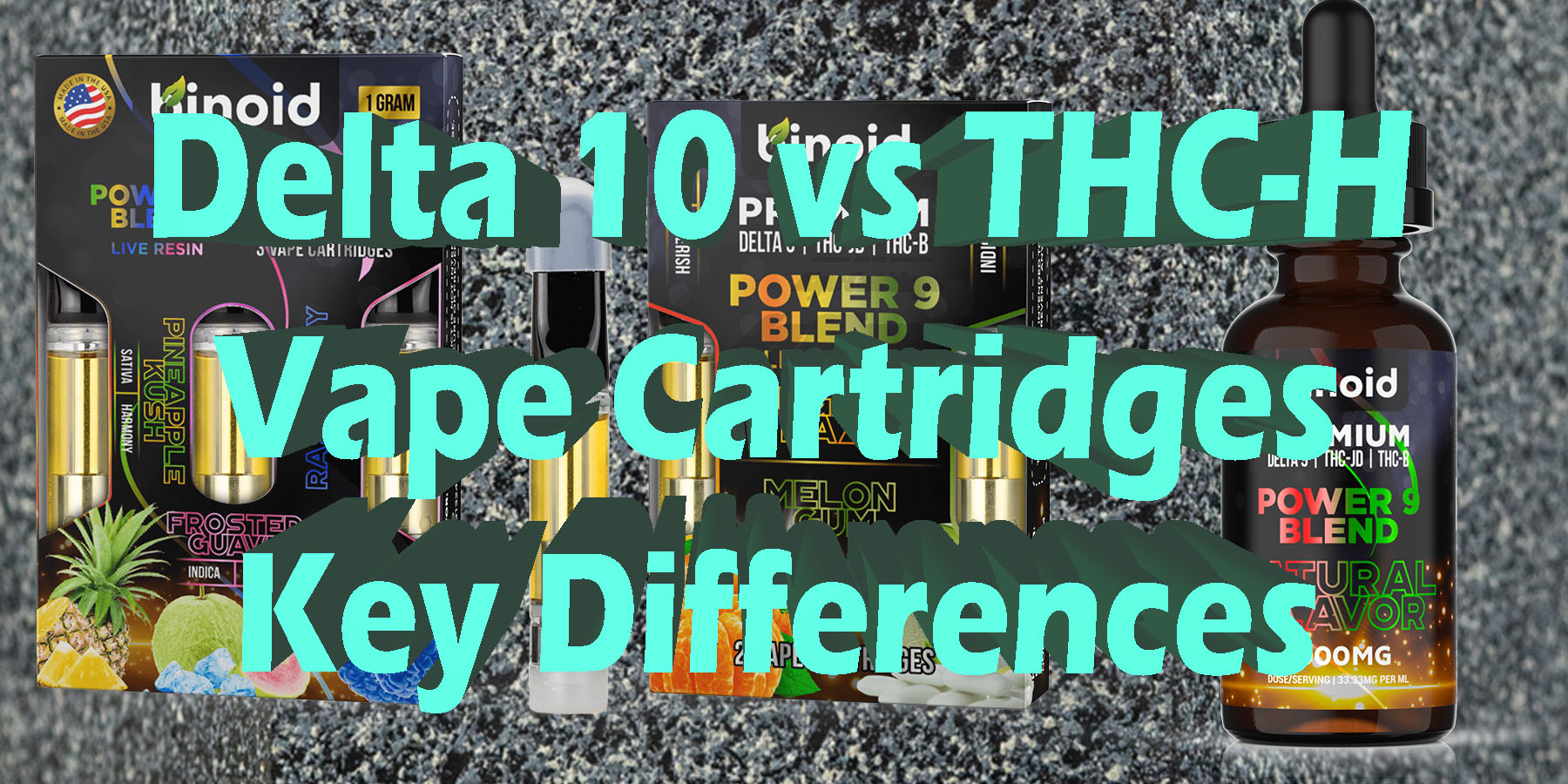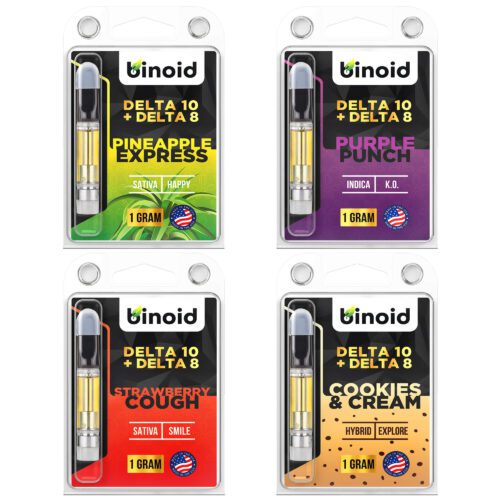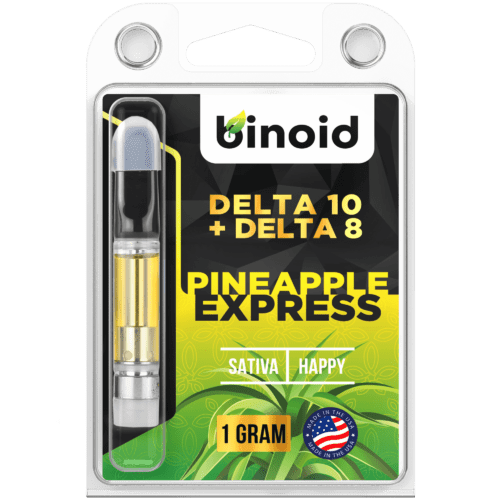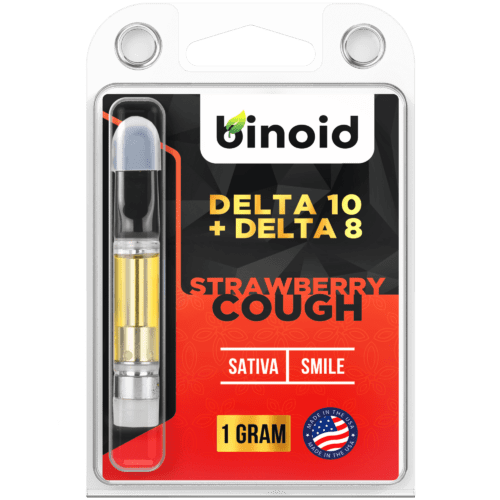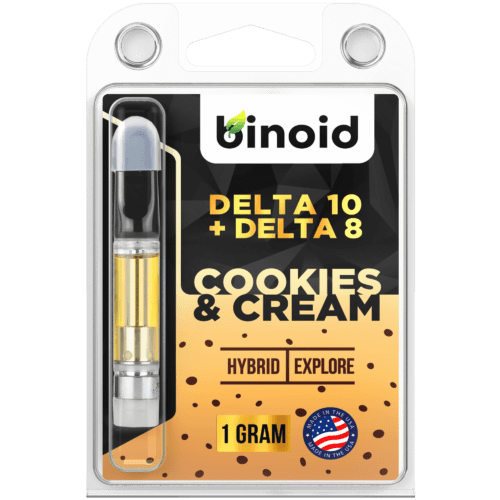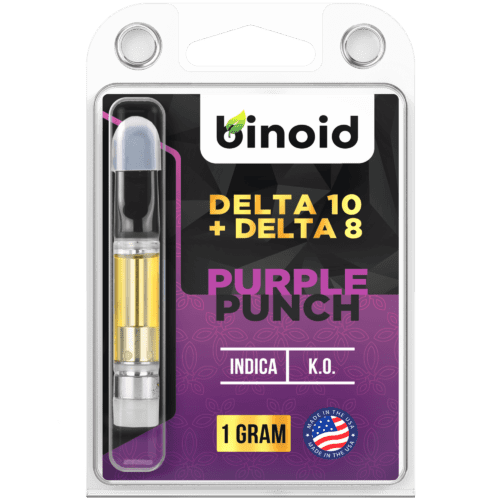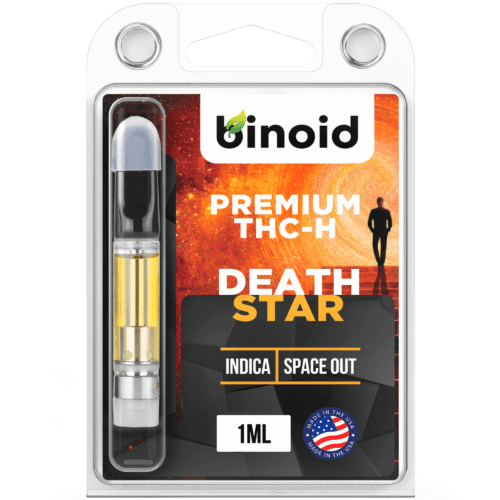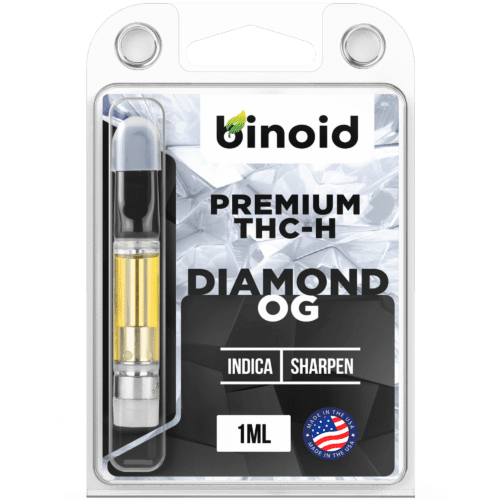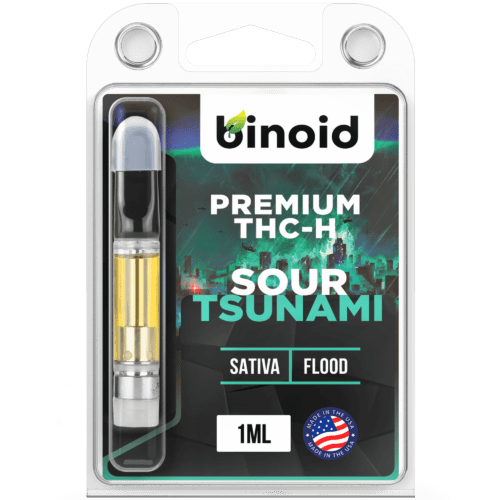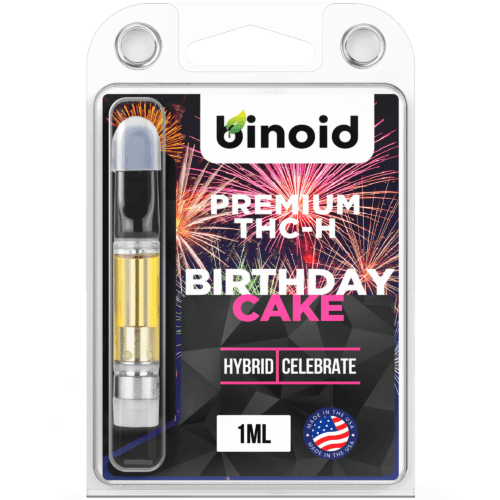There is a profound difference between a pleasant spark of inspiration and an all-consuming fire of creativity. In the same way, there is a vast gulf between a cheerful, sociable buzz and a deeply immersive, transformative state of euphoria. The modern hemp industry, powered by scientific innovation, now allows consumers to consciously choose between these different orders of magnitude in their experience. Through the precision of vape cartridges, one can select not just a mood, but the absolute scale of the intended journey.
This very choice between manageable enhancement and overwhelming power is at the heart of the Delta 10 vape cartridges vs. THC-H vape cartridges matchup. One offers a vibrant, high-altitude cruise perfect for creative days and social nights. The other provides a full-throttle rocket launch into the deepest cosmos of bliss, a voyage for the most experienced psychonauts only.
To Buy Cannabinoid Vape Cartridges Click Here
Recommended products
What are Cannabinoids?
To truly appreciate the profound differences in the Delta 10 and THC-H matchup, one must first possess a firm understanding of the fundamental building blocks of their composition: cannabinoids. In the broadest scientific sense, cannabinoids represent a diverse class of chemical compounds that are defined by their ability to interact with and influence the body’s endocannabinoid system. These compounds are the primary active ingredients responsible for the effects associated with the cannabis plant, but their origins are not confined to botanical sources alone.
The scientific community generally categorizes these molecules into three distinct groups: phytocannabinoids, which are synthesized by plants (most famously, the Cannabis sativa plant); endocannabinoids, which are produced naturally within the bodies of humans and other vertebrate animals; and synthetic cannabinoids, which are created artificially in a laboratory setting. Phytocannabinoids, like the Delta 10 and THC-H we are exploring today, have a molecular structure that allows them to interface with our bodies’ internal systems, orchestrating a complex symphony of physiological responses.
The discovery and subsequent understanding of this intricate relationship are rooted in the endocannabinoid system (ECS), a crucial and sophisticated cell-signaling network. The ECS plays a vital role in regulating a vast array of functions to maintain a state of internal physiological balance, a concept known as homeostasis. This system is composed of three core components: endocannabinoids (such as anandamide, often called the “bliss molecule,” and 2-arachidonoylglycerol, or 2-AG), which are the body’s own naturally produced cannabinoid molecules; receptors that these compounds bind to (primarily CB1 receptors, found mostly in the brain and central nervous system, and CB2 receptors, located predominantly in the peripheral nervous system and immune cells); and enzymes that metabolize and break down the endocannabinoids once they have served their signaling purpose.
Phytocannabinoids are able to produce their effects because their molecular shapes allow them to mimic or otherwise influence our natural endocannabinoids, binding to these same receptors and thus modulating cellular activity.
Within the vast family of over one hundred identified phytocannabinoids, there is a clear and important distinction between major and minor compounds, as well as a distinction between their active and acidic forms. Major cannabinoids, such as cannabidiol (CBD) and the well-known Delta 9 THC, are the most abundant active compounds and have been the subject of extensive scientific research and public discussion for many decades. In contrast, minor cannabinoids exist in much smaller, often trace, amounts. Delta 10 and THC-H both fall squarely into this category.
Furthermore, most cannabinoids exist in the raw cannabis plant in an acidic form, such as THCA and CBDA. These are known as cannabinoid acids and are the biosynthetic precursors to the active compounds we are more familiar with. THCA, for example, is a major cannabinoid in its raw form, often the most abundant compound in uncured hemp flower.
This fundamental distinction between different types of cannabinoids is absolutely essential to understanding the landscape of the modern hemp industry. The 2018 Farm Bill, a landmark piece of federal legislation, federally legalized hemp and all hemp-derived products, provided they contain no more than 0.3% Delta 9 THC by dry weight. This legal framework, while sharply focused on restricting the specific molecule of Delta 9 THC, inadvertently created a massive opportunity for the scientific exploration and commercialization of other cannabinoids that could be legally sourced from compliant hemp.
This legal pathway, combined with significant advancements in agricultural breeding, chemical conversion, and purification techniques, has directly enabled the rise of products centered around compounds like the isomer Delta 10 and the powerful homolog THC-H, empowering consumers with a sophisticated palette of experiences.
Recommended products
What are Cannabinoid-Infused Vape Cartridges and How are They Typically Created?
Cannabinoid-infused vape cartridges, often simply called “vape carts,” are small, pre-filled containers that hold a liquid formulation of purified cannabinoid distillate and, typically, aromatic terpenes. These self-contained units are meticulously engineered to attach to a compatible battery, commonly known as a vape pen or 510-thread battery, which provides the necessary electrical power to heat the liquid and instantaneously transform it into an inhalable vapor. The primary function of a vape cartridge is to offer a convenient, discreet, and highly efficient method for consuming cannabinoids.
Unlike other consumption methods that require more preparation or have a significantly delayed onset, such as edibles, vaping allows for the rapid delivery of the active compounds directly into the bloodstream through the vast surface area of the lungs. This results in effects that can be felt almost immediately, often within a matter of minutes, providing users with unparalleled control over their experience as they can take small draws and precisely gauge the effects before deciding to continue.
The marketplace for cannabinoid vape cartridges is incredibly diverse, with products available in a multitude of shapes, sizes, and materials designed to suit various consumer preferences and accommodate ongoing technological advancements. The most ubiquitous size is the 1-gram (or 1mL) cartridge, which offers a substantial amount of oil that serves as a happy medium for both regular and occasional users. However, smaller half-gram options remain popular for those wishing to sample a new strain, while larger 2-gram, 3-gram, and even 5-gram disposable vape pens have emerged for users seeking maximum convenience and longevity. In terms of shape, the classic cylindrical design with a 510-thread connection remains the undisputed industry standard due to its near-universal compatibility with the vast majority of batteries.
Yet, some brands have pioneered proprietary pod-style systems that often feature a sleeker, more modern aesthetic and a magnetic connection, although they require a specific, brand-locked device to function. The materials used in cartridge construction are also a key differentiator, profoundly impacting performance, safety, and the purity of the user experience, with a clear hierarchy from basic plastics to premium glass and ceramic constructions.
While external designs may vary, the core components of a standard vape cartridge are universal and work in precise concert to deliver a smooth, flavorful, and consistent experience. Each part plays a critical, non-negotiable role in the device’s function, from the point of contact with the user to the electrical connection with the power source. A detailed breakdown reveals the intricate design that ensures safety and proper function:
Mouthpiece: This is the uppermost part of the cartridge through which the user inhales the vapor. Mouthpieces are crafted from a variety of materials, including common options like plastic, more premium choices like heat-resistant ceramic, and stylish alternatives like metal or wood. The shape can also differ—flat, rounded, or ergonomically contoured (“duckbill”)—to enhance comfort. The material choice is not merely aesthetic; ceramic mouthpieces, for instance, are excellent at dissipating heat, ensuring a cooler and more comfortable draw.
Tank/Reservoir (Chamber): The tank is the main body of the cartridge that holds the precious cannabinoid-infused oil. It must be transparent to allow the user to monitor the remaining liquid. While some budget cartridges may use polycarbonate plastic, high-quality tanks are almost exclusively made from borosilicate glass. This type of glass is highly durable and, most importantly, non-reactive, ensuring that there is no chemical leaching into the oil, which could alter the flavor and compromise the purity of the terpenes and cannabinoids.
Atomizer/Heating Element: The atomizer is the functional heart of the cartridge, responsible for heating the oil to its precise vaporization point (typically between 300-400°F). It consists of a heating coil wrapped around or embedded within a wicking material that draws in the oil. In modern, high-end cartridges, the atomizer core is made of a porous ceramic. This technology, often referred to by brand names like CCELL, provides exceptionally even heat distribution and a larger surface area, which prevents direct contact between the hot coil and the oil. This indirect heating is crucial for preventing burning, which would create a harsh taste and potentially harmful byproducts, and for preserving the delicate and complex flavor profile of the terpenes.
Base/Connector: The base is the bottom part of the cartridge that houses the atomizer and features the threading used to connect the device to a battery. The most common type is the 510-thread (referring to the 10 threads at 0.5 mm per thread), which has become the universal standard, ensuring interoperability between most cartridges and batteries on the market. The base also contains the airflow intakes—small holes that allow air to enter and mix with the vapor—and the electrical connection point that draws power from the battery to activate the heating element when the user inhales or presses a button.
The production of a cannabinoid-infused vape cartridge is a meticulous, multi-stage process that merges precision manufacturing with sophisticated chemical science to ensure a safe, effective, and enjoyable final product. This complex journey can be broken down into three distinct parts: the fabrication of the physical hardware, the formulation of the specialized oil, and the final assembly and rigorous quality control.
Part 1: How the Cartridge Itself is Made and Constructed
The manufacturing of the empty cartridge begins with the high-precision fabrication of its individual components in specialized facilities. The borosilicate glass for the tank is molded and cut to exact specifications. The ceramic for the atomizer core is created from refined mineral powders, which are then fired at extremely high temperatures and shaped, after which the metallic heating coil is carefully integrated. The mouthpiece and base are also manufactured, often through injection molding for plastics or CNC (Computer Numerical Control) machining for metals.
These separate parts are then assembled in a sterile, dust-free clean-room environment (often adhering to ISO standards) to prevent any contamination. Throughout this process, stringent quality control is paramount, with manufacturers conducting tests for air-tightness to prevent leaks, ensuring proper airflow resistance for a good draw, and verifying that the electrical connections are sound and the 510-threading is perfectly machined.
Part 2: How the Cannabinoid-Infused Vape Oil is Made
This highly scientific stage starts with legally compliant, high-quality hemp biomass. The cannabinoids are first extracted from the plant material using various methods. For stable distillates, supercritical CO2 or ethanol extraction is common. For more volatile, full-spectrum extracts rich in acidic cannabinoids, cold extraction methods using solvents like butane or propane are often used to create “live resin.” After extraction, the oil is refined. For minor cannabinoids, this may involve complex isomerization to convert a precursor like CBD into the target molecule. For major cannabinoids, it may involve distillation to achieve high purity. Finally, this purified oil is formulated, often by reintroducing carefully selected terpene profiles to create the desired flavor, aroma, and strain-specific effects.
Part 3: Bringing It All Together
In the final stage, the precisely formulated cannabinoid and terpene mixture is gently heated to reduce its viscosity and is then carefully injected into the empty, assembled cartridges. This is typically done using automated filling machines in a sterile environment to ensure dosage consistency and prevent contamination. Once filled, the cartridges are securely capped or sealed to create an airtight container that prevents any leakage. The last and arguably most critical step is comprehensive third-party lab testing. A statistically significant sample from each batch is sent to an independent, ISO-accredited laboratory. There, it is tested for potency (to confirm cannabinoid percentages), purity (to ensure it is free from residual solvents, heavy metals, pesticides, and microbial contaminants), and legal compliance (to verify the Delta 9 THC level is at or below the 0.3% threshold). Only after passing these rigorous tests is the batch approved for packaging and release to the market.
Recommended products
Breaking Down Today’s Cannabinoid Vape Cartridges Matchup: Delta 10 Vape Cartridges vs. THC-H Vape Cartridges
With a clear understanding of cannabinoid fundamentals and vape cartridge production, we can now examine the main event. This is a particularly fascinating matchup because it pits two stimulating, “Sativa-like” cannabinoids against each other, both of which have garnered immense popularity among users seeking an energetic experience. This is not a comparison of a mild versus a strong compound, but a deep dive into two different types of uplifting effects. On one side stands Delta 10, a popular isomer known for its classic, cerebrally euphoric high. On the other stands THC-H, a unique homolog celebrated for its clean, functional, and focused stimulation. Exploring the science and reported effects behind these two energetic compounds is key to making an informed choice that aligns with your specific preferences.
Contender #1: Delta 10 Vape Cartridges
Entering the matchup is a cannabinoid that has become synonymous with bright, creative energy and euphoric good vibes: Delta 10. Vape cartridges featuring this popular isomer have become a go-to choice for consumers seeking a classic “Sativa” experience within the legal hemp market. Delta 10 is widely celebrated for its ability to inspire a cheerful, cerebral buzz that is perfect for social gatherings, artistic endeavors, and daytime activities. It offers a gentle but distinct psychoactive lift that elevates mood without the intensity or potential for anxiousness that can sometimes accompany other cannabinoids. This has positioned Delta 10 vape cartridges as a reliable and beloved option for those looking to add a spark of joyful energy to their day.
At its core, Delta 10 THC (Delta-10-tetrahydrocannabinol) is a structural isomer of Delta 9 THC, meaning it shares the same chemical formula but with a different arrangement of atoms. Its defining feature is a double bond located on the tenth carbon in its atomic structure. This placement results in a different three-dimensional shape that is thought to interact with the endocannabinoid system’s CB1 receptors in a less direct or weaker manner than Delta 9, which is the source of its milder, yet distinctly uplifting, psychoactive effects.
While Delta 10 was first synthesized by the renowned cannabinoid researcher Raphael Mechoulam in the 1980s, it remained a scientific curiosity. Its modern emergence was famously accidental, as it was rediscovered in California during the refinement of a hemp extract that had been contaminated with fire retardant, leading to the formation of unusual crystals that were later identified as Delta 10. Like other minor cannabinoids, it is found in only trace amounts in the plant, so it must be created in a lab via isomerization of CBD to produce the pure distillate used in vape products.
Now, the market for Delta 10 vape cartridges is robust and varied, appealing to a wide range of users who appreciate its uplifting and functional effects. As a versatile and popular cannabinoid, Delta 10 is available in numerous formats and blends designed to showcase its unique properties.
Shapes & Sizes: Delta 10 is widely available in all standard cartridge and disposable formats, from the common 1-gram 510-thread cartridge to larger 2-gram and 3-gram disposable devices. Its popularity ensures that consumers can find it in whichever hardware style they prefer, making it a highly accessible option in the market.
How They’re Constructed: Because Delta 10 distillate is a high-quality, refined product, reputable brands package it in equally high-quality hardware. This typically includes cartridges with advanced ceramic heating elements that ensure the oil is vaporized smoothly and evenly, preventing burning. These are paired with durable borosilicate glass tanks to preserve the purity and flavor of the Delta 10 and its accompanying terpenes.
Potential Use of Live Resin or Live Rosin: While Delta 10 itself is created through isomerization, it can be expertly blended with full-spectrum extracts to enhance the experience. Some premium products feature Delta 10 distillate blended with live resin, which introduces a rich profile of natural, cannabis-derived terpenes. This creates a product with the uplifting high of Delta 10 and the authentic, robust flavor of a true-to-strain live resin.
Strain-Infused: The effects of Delta 10, often described as a perfect Sativa-like experience, are carefully guided by the terpene profile infused into the distillate. When blended with Sativa terpenes, the experience leans towards a more energetic, giggly, and creative uplift. When infused with Indica terpenes, the effects are steered towards a more relaxed physical sensation to balance the cerebral buzz.
Sometimes Combined with Other Cannabinoids: Delta 10‘s uplifting profile makes it an excellent team player in a wide array of blends.
Non-Intoxicating: It is often blended with CBG to enhance the feeling of focus and alertness, creating a productive, clear-headed experience with a gentle buzz.
Mild Potency: Delta 10 is frequently combined with THCV to create a layered, highly stimulating Sativa experience, combining the creative euphoria of one with the sharp focus of the other.
Moderate Potency: A very common blend pairs Delta 10 with Delta 8. This creates a classic “hybrid” effect, with the Delta 10 providing the cerebral energy and the Delta 8 offering a calming, relaxing body feel for a perfectly balanced journey.
Strong Potency: To create a powerful Sativa-dominant high, Delta 10 is often used as a base and enhanced with a small percentage of an ultra-potent cannabinoid like THC-P, resulting in a soaring and intensely euphoric experience.
The overall effects of a Delta 10 vape cartridge are centered around a bright, uplifting, and cerebrally-focused experience. The core experience is one of creative energy, heightened mood, and a general feeling of optimistic euphoria, making it an ideal companion for daytime use. Its functional aspect is this very sociability and creativity; it allows users to feel blissfully elevated while remaining engaged, talkative, and mentally agile. This baseline high is then customized by its formulation.
A Sativa-dominant Delta 10 blend is perfect for social gatherings or artistic pursuits, providing a happy and inspiring buzz. An Indica-dominant blend, on the other hand, is ideal for a relaxed afternoon, providing a gentle body calm to complement the happy head high. When blended with potent cannabinoids like THC-P, the uplifting nature of Delta 10 remains, but the overall intensity is magnified to a powerful new level.
Recommended products
Pros & Cons
Delta 10‘s unique properties give it a very distinct set of advantages and disadvantages. A clear understanding of these is key to deciding if this bright and cheerful compound is the right choice for you.
Pros:
Promotes a Cheerful, Uplifting Mood: Delta 10 is most celebrated for its ability to induce a happy, optimistic, and cheerful state of mind. Users frequently report that it helps to elevate their mood and inspire a more positive outlook, making it an excellent choice for social situations or for simply adding a spark of joy to the day. This quality is often described as a clean, vibrant buzz that promotes positive feelings without the heavy introspection that can sometimes accompany other cannabinoids. This makes it a go-to for recreational enjoyment where lightheartedness is the primary goal, as it tends to make experiences feel more engaging and fun.
Sparks Creativity and Conversation: The cerebral nature of the Delta 10 high is often associated with a boost in creative thinking and sociability. It can help users break out of conventional thought patterns, making it easier to brainstorm, engage in imaginative activities, or appreciate art and music from a new perspective. Many also find that it lowers social inhibitions and makes conversation flow more freely and enjoyably. The gentle euphoric state it fosters can promote more associative, “out-of-the-box” thinking, leading to more dynamic and interesting discussions with friends.
Manageable, “Sativa-Leaning” High: The psychoactive effect of Delta 10 is often described as a classic “Sativa” experience—it is noticeable and euphoric but typically clear-headed and not overwhelming. This makes it a manageable option for users who want a distinct psychoactive lift without the potential for the intensity or anxiousness that can sometimes accompany more powerful cannabinoids. This manageability is defined by a lack of significant cognitive impairment, allowing users to remain focused and articulate. This makes for a functional high that enhances activities rather than detracting from them.
Ideal for Daytime Use: Because its effects are primarily energizing and cerebral with less potential for heavy physical sedation, Delta 10 is perfectly suited for daytime activities. It allows users to remain active, productive, and engaged, making it a great companion for tackling a to-do list, engaging in hobbies, or enjoying the outdoors. Unlike more relaxing cannabinoids, Delta 10 provides a boost without a subsequent crash, sustaining a pleasant level of energy for its duration. This makes it a popular choice for powering through household chores or adding a little extra motivation to a workout.
Federal Legality Framework: As a cannabinoid derived from legal hemp and containing less than 0.3% Delta 9 THC, Delta 10 falls under the federal legal framework of the 2018 Farm Bill. This has made its desirable, Sativa-like effects accessible to a massive audience of consumers across the country, especially in areas where traditional cannabis is not legally available. This specific legal positioning, which hinges on the precise chemical definition in the law, is the entire foundation of its market presence. This allows it to be sold online and shipped to many states, offering unparalleled convenience.
Versatile for Blending: Delta 10’s uplifting character makes it a highly versatile component in cannabinoid blends, where it often serves as the “Sativa” element. It can be paired with Delta 8 for a balanced hybrid feel, with THCV for a double dose of stimulating energy, or used as a base for more potent additives like THC-P. Its ability to play well with others makes it a staple in many popular product formulations. Formulators use it to add a bright, euphoric top-note to an experience, fundamentally shaping the character of the final product.
Less Likely to Induce “Couch-Lock”: For users who enjoy the euphoric aspects of cannabinoids but dislike the heavy, sleepy, or immobilizing feeling known as “couch-lock,” Delta 10 is an ideal alternative. It allows consumers to experience a vibrant and happy buzz while remaining physically light, active, and motivated. This makes it a great choice for staying on your feet and engaged in activities, rather than sinking into the sofa. This quality ensures that you can enjoy the experience without sacrificing the energy needed for the rest of your day.
Rapid Onset via Vaping: When consumed through a vape cartridge, the effects of Delta 10 are delivered with remarkable speed and efficiency, typically being felt within minutes. This rapid onset allows users to quickly assess the initial impact of their dose, providing them with direct control to precisely manage their level of consumption for a perfect experience. This immediate feedback loop is a key safety feature, empowering the user to find their ideal dose with precision and minimizing the risk of accidentally overconsuming, which is much more common with slower-acting methods.
Cons:
Can Be Over-Stimulating for Some: For individuals who are particularly sensitive to stimulants or prone to anxious feelings, the energizing and cerebral nature of Delta 10 could potentially be over-stimulating. In some cases, this could manifest as racing thoughts, a feeling of restlessness, or physical jitteriness that is uncomfortable. This is especially true for those with a low tolerance for THC or a known sensitivity to Sativa-dominant cannabis strains. Therefore, it is always wise for new users to start with a very small dose to assess their personal sensitivity.
May Interfere with Sleep: Due to its uplifting and stimulating properties, consuming Delta 10 late in the day or in the evening could potentially interfere with one’s ability to wind down and fall asleep. Its effects are generally counterproductive to the natural hormonal and neurological processes that signal the body it’s time to rest and relax. For this reason, it is best enjoyed during the active hours of the day. Most users should avoid consuming it for at least 4-6 hours before their intended bedtime to ensure a restful night.
Less Research Than Major Cannabinoids: While Delta 10 has been known to science for decades, its recent emergence on the consumer market means it has significantly less clinical research behind it compared to major cannabinoids like CBD and Delta 9 THC. Although its academic history is long, the large-scale human consumption data is very new, so the full picture of its long-term effects is still being developed through modern usage, not extensive clinical trials. Therefore, users are operating without a deep body of established medical safety data.
Uncertain Long-Term Legal Status: Delta 10 exists in a precarious legal gray area, as it is a lab-altered compound derived from hemp. Its status is subject to the shifting interpretations of regulatory bodies like the DEA, which has made statements regarding “synthetically derived” cannabinoids. Because it is created in a lab via isomerization from CBD, some regulators argue it falls outside the definition of “natural” hemp. This creates significant uncertainty about its long-term legality and availability on the market.
Recommended products
Contender #2: THC-H Vape Cartridges
Stepping into the spotlight is one of the most powerful and intriguing cannabinoids to emerge from modern science: THC-H. Vape cartridges featuring this rare compound are designed for the seasoned connoisseur, offering an experience defined by intense, long-lasting euphoria and a profound mood lift. THC-H (short for Tetrahydrocannabihexol) is a naturally occurring phytocannabinoid that was only officially identified in 2020, and its discovery has provided a new frontier for high-potency exploration. Positioned as one of the strongest cannabinoids available, THC-H vape cartridges are a premium choice for users who have explored other potent compounds and are seeking a uniquely blissful and enduring journey.
At its core, THC-H is a homolog of Delta 9 THC, and its remarkable potency is derived from a specific difference in its molecular structure. The psychoactive strength of THC-like cannabinoids is largely determined by the length of their alkyl side chain, which dictates how effectively they can bind to the brain’s CB1 receptors. While Delta 9 THC has a 5-carbon (pentyl) side chain, THC-H possesses a longer 6-carbon (hexyl) side chain. This structure allows it to bind to the CB1 receptor with extremely high affinity, making it significantly more potent than traditional Delta 9 THC.
In fact, it is considered the second most potent naturally occurring cannabinoid discovered so far, surpassed only by THC-P. Like its ultra-potent relatives, THC-H is found in only infinitesimal amounts in the cannabis plant. Therefore, for commercial products, it must be created in a laboratory through sophisticated chemical processes, starting from a more abundant precursor like CBD, to yield the pure, powerful distillate used in vape cartridges.
Now, the market for THC-H vape cartridges is highly specialized, with an emphasis on creating powerful and synergistic blends for the advanced user. Given its immense strength, THC-H is rarely the sole active ingredient in a cartridge. Instead, it is skillfully employed as a potent amplifier, added in precise percentages to a base of a more moderate cannabinoid to elevate the entire experience to a new level.
Shapes & Sizes: THC-H blend cartridges are available in the standard 1-gram, 2-gram, and larger disposable formats that consumers are familiar with. The hardware is almost always of premium quality to handle the high-value oil. For the user, the most critical specification is not the size of the device but the verified percentage of THC-H in the blend, as this will be the primary driver of the experience’s intensity and duration.
How They’re Constructed: Brands offering ultra-potent cannabinoids like THC-H understand that a premium oil demands premium hardware. Consequently, these potent blends are almost exclusively housed in cartridges built with high-quality materials like non-reactive borosilicate glass and advanced ceramic core atomizers. This ensures the oil is heated evenly and efficiently, delivering a smooth, flavorful draw and preventing any degradation of the potent compounds.
Potential Use of Live Resin or Live Rosin: Many of the most desirable THC-H products are formulated as live resin blends. In these cartridges, a flavorful, full-spectrum live resin base (often containing Delta 8) is “spiked” with a specific amount of pure THC-H distillate. This method creates a superior product that combines the authentic, terpene-rich taste and nuanced effects of live resin with the profound potency and extended duration of THC-H.
Strain-Infused: The terpene profile in a THC-H blend is crucial for steering its powerful effects toward a desired outcome. An Indica-dominant terpene profile, heavy in myrcene, can guide the intense euphoria towards a state of deep, blissful, and full-body relaxation. Conversely, a Sativa-dominant profile, rich in limonene, will aim the potent effects towards a soaring, giggly, and creative cerebral experience that feels both energetic and intensely happy.
Sometimes Combined with Other Cannabinoids: As THC-H is almost always found in a blend, its primary function is to work synergistically with other cannabinoids. It acts as an engine of both potency and duration, fundamentally transforming the character of the base it is mixed with.
Non-Intoxicating: Due to its immense psychoactive power, THC-H is not used in non-intoxicating blends.
Mild Potency: The presence of THC-H in any significant amount instantly moves a blend out of the mild potency category.
Moderate Potency: A common use for THC-H is to create moderate-to-strong blends. For example, adding a small percentage of THC-H to a Delta 8 base creates an experience that is far stronger and longer-lasting than Delta 8 alone but more manageable than a high-potency THC-P blend.
Strong Potency: To create the most powerful and long-lasting experiences available, formulators will create blends with higher concentrations of THC-H or combine it with other powerhouse cannabinoids like THC-P and THC-JD. These products are intended only for the most experienced users seeking the absolute peak of intensity and duration.
The overall effects of a THC-H vape cartridge are defined by its intense potency and, most notably, its remarkably long duration. The core experience is one of powerful, mood-lifting euphoria that can feel both mentally and physically encompassing, often lasting for many hours. Its functional aspect is its sheer strength and endurance; it is a tool for achieving a profound and long-lasting state of bliss, making it ideal for a weekend or a day with no other plans. This baseline experience is then heavily influenced by the blend. When added to an Indica-dominant Delta 8 base, THC-H creates a deeply relaxing and blissful journey that can last for an entire evening. When blended into a Sativa live resin, it can produce a soaring, creative, and vibrant euphoria that continues for hours on end.
Recommended products
Pros & Cons
THC-H‘s extreme potency and long duration mean its advantages and drawbacks are particularly significant. A clear-eyed view of these points is critical for any user considering this powerful compound.
Pros:
Very High Potency: THC-H is one of the strongest psychoactive cannabinoids discovered, significantly more potent than Delta 9 THC. For experienced users seeking a powerful and profound experience, its strength is its greatest asset. It delivers an intensity that milder cannabinoids simply cannot approach, making it a top-tier choice for the seasoned connoisseur who feels that other compounds no longer provide the desired level of effect.
Extremely Long-Lasting Effects: A defining characteristic of THC-H is the exceptionally long duration of its effects. Many users report that the experience can last for many hours, far longer than that of Delta 8 or Delta 9 THC. For users who want a sustained, multi-hour journey without needing to re-dose, this endurance is a major benefit, making it perfect for a leisurely day, a long flight, or an immersive activity like a music festival.
Profound Mood-Lifting Euphoria: The euphoric effects of THC-H are often described as being exceptionally powerful and mood-lifting. Users frequently report a profound sense of happiness, well-being, and blissful contentment that can be both mentally and emotionally elevating. This quality makes it highly sought after for purely recreational and enjoyment-focused sessions, where the primary goal is to achieve a state of joyful bliss.
Effective for High-Tolerance Users: For consumers with a significant tolerance to other cannabinoids, THC-H is a highly effective option. Its powerful binding affinity for the CB1 receptor allows it to overcome the desensitization that can occur with prolonged use of less potent compounds. This enables high-tolerance users to once again achieve a powerful and satisfying experience that feels novel and potent, effectively resetting their experiential baseline.
Enhances Blends with Unique Character: THC-H is an incredible tool for product formulators, allowing them to create unique and powerful blends with specific characteristics. When added to a base, it doesn’t just make it stronger; it adds its own signature long-lasting and intensely euphoric character to the mix. This allows for the creation of novel products with layered and complex effects that evolve over time.
Novel Experience Profile: For cannabinoid enthusiasts who have explored a wide range of compounds, THC-H offers a genuinely new and distinct profile. Its unique combination of high potency and exceptionally long duration sets it apart from other strong cannabinoids like THC-P or THC-B, which may have different feels or shorter durations. This provides a new frontier of effects for the adventurous user to explore and appreciate.
Efficiency of Use: Because THC-H is so potent, a very small amount is required to produce a significant effect. A single, small puff from a THC-H blend can be as effective as multiple larger puffs from a less potent cartridge. This efficiency means a single cartridge can last a user a very long time, which can be a cost-effective benefit despite the typically higher price point of the product.
Federal Legality Framework: Despite its incredible potency, THC-H derived from legal hemp falls under the same federal legal framework as Delta 8. As long as the final product contains less than 0.3% Delta 9 THC, it is considered a federally legal hemp product under the 2018 Farm Bill. This makes its powerful effects accessible in many states where traditional cannabis is restricted.
Cons:
Extreme Potency Can Be Overwhelming: The primary strength of THC-H is also its most significant risk. For anyone other than highly experienced users with a substantial tolerance, its effects can be far too intense and potentially uncomfortable. The sheer power can be disorienting, and for those unprepared, it could lead to feelings of intense unease or paranoia. It is absolutely not a cannabinoid for beginners.
Very Long Duration is a Major Commitment: The exceptionally long-lasting effects can be a serious drawback if the user has any plans or responsibilities later in the day. An experience that lasts for many hours can easily interfere with work, social obligations, or even sleep if taken too late. Unlike shorter-acting cannabinoids, a THC-H experience is a significant time commitment that cannot be easily ended and must be planned for with great care and an open schedule.
High Potential for Overconsumption: The risk of taking too much THC-H is very high, particularly for users who are not accustomed to its strength. A single puff too many can lead to an unpleasantly intense and uncomfortably long experience. Dosing must be approached with extreme caution, starting with the smallest possible inhale (a 1-2 second draw) and waiting at least 30-60 minutes to fully gauge the effects before even considering more.
Limited Clinical Research on Safety: THC-H was only scientifically identified in 2020, so there is a significant lack of long-term clinical research on its safety profile, its full range of side effects, and its potential health impacts. While it is a naturally occurring cannabinoid, its use at the concentrated levels found in vape products is a very recent phenomenon. Users are therefore navigating uncharted territory without the extensive safety data that exists for more well-studied compounds.
Recommended products
Other Key Things You Should Know About When Choosing Either Delta 10 Vape Cartridges or THC-H Vape Cartridges
As we have established, choosing between Delta 10 and THC-H vape cartridges is a decision that requires a sophisticated understanding of their potent effects and unique chemical properties. A responsible, safe, and satisfying experience hinges on a holistic understanding of the product, from its agricultural origins as a humble hemp seed to the sophisticated hardware that delivers its vapor. The current hemp-derived cannabinoid market, while innovative and exciting, operates in a space with minimal federal oversight, which places the burden of due diligence squarely on the consumer.
So, to navigate this complex landscape safely and effectively, it is absolutely essential to look beyond the flashy marketing claims and scrutinize the factors that truly define a product’s quality, safety, and suitability for your specific needs. The following points provide a comprehensive checklist of critical considerations that every consumer should be aware of before making any purchase:
Source of Hemp: The absolute foundation of any high-quality cannabinoid product is the hemp from which its base molecules are derived. The quality of this starting botanical material directly and profoundly impacts the purity and safety of the final distillate, as any contaminants in the plant can become highly concentrated during the extraction and conversion processes. It is imperative to choose products made from hemp grown in the United States, where domestic farmers are subject to federal and state regulations regarding cultivation practices under the 2018 Farm Bill. Always look for brands that are completely transparent about their sourcing, preferably using hemp grown with organic and sustainable methods to minimize the risk of the plant absorbing pesticides, heavy metals, or chemical fertilizers from the soil.
Third-Party Lab Testing (COAs): Third-party lab testing is the single most important factor for consumer safety, but these advanced cannabinoids require a more critical reading of the Certificate of Analysis (COA). For any product, a full panel screening for contaminants like residual solvents, heavy metals, and pesticides is essential to verify purity. For THC-H, it is critical to look at the potency section to verify the exact percentage in the blend, as the difference between 2% and 5% is enormous. For Delta 10, the COA verifies the potency and confirms its legal compliance. A brand’s willingness to provide comprehensive, easily accessible, and up-to-date COAs for every single batch is the ultimate sign of transparency and commitment to consumer safety.
Extraction and Conversion Methods: Understanding the production method is key to appreciating the product you are consuming and the potential risks involved. Both Delta 10 and THC-H are converted cannabinoids, meaning they are created through chemical synthesis in a laboratory. Delta 10 is created through isomerization, which uses an acid catalyst to rearrange the structure of CBD. THC-H is created through a more complex, multi-step process that modifies a precursor’s alkyl side chain. Both processes require immense skill and, crucially, extensive post-reaction purification to remove all residual catalysts and byproducts, as consumer safety depends entirely on the quality of the lab.
Terpene Profiles: Terpenes are the aromatic organic compounds that define a strain’s unique flavor and aroma, and they play a crucial role in modulating the effects of cannabinoids through the entourage effect. In both Delta 10 and THC-H cartridges, the base is a pure distillate, so terpenes must be added back into the final product to create the desired strain experience. The highest quality products will use either cannabis-derived terpenes (CDTs) or “live resin,” a full-spectrum extract from flash-frozen hemp. These options provide a much more authentic, complex, and “true-to-strain” flavor and a more nuanced effect compared to cartridges that use less expensive, botanically-derived terpenes.
Cartridge Hardware Quality: The precious oil inside the cartridge is only half of the equation; the quality and safety of the hardware itself are equally critical for a positive and safe experience. The best cartridges are constructed with high-quality, inert materials like borosilicate glass tanks and advanced ceramic heating elements to ensure the oil is heated evenly and never burned. Another critical but often overlooked component is the cartridge’s seals and gaskets. High-quality cartridges use durable, non-reactive materials like medical-grade silicone to prevent leaks and ensure that no part of the hardware degrades and leaches into the oil over time, which is a risk with terpene-rich formulations.
Your Personal Tolerance: This is the most critical personal consideration in the matchup between Delta 10 and THC-H. Understanding your own body and your unique tolerance level is absolutely fundamental. Delta 10 is well-suited for a wide range of users, from beginners (with caution) to advanced users who enjoy its uplifting but manageable effects. THC-H, on the other hand, is exclusively for advanced, highly experienced users with a significant tolerance to THC. A newcomer to cannabinoids should never, under any circumstances, start with a THC-H product, as the experience will almost certainly be overwhelming.
Desired Experience and Duration: The choice between these two potent cannabinoids comes down to the specific character and duration of the high you are seeking. Are you looking for a more traditional, cerebral, and euphoric “Sativa” high that is great for creativity and socializing for a standard-length session? Delta 10 is specifically suited for this purpose. Are you an experienced user seeking a more profound, immersive, and intensely blissful journey that lasts for many hours? A THC-H cartridge would be the more appropriate tool for that specific goal. Aligning the cannabinoid with your desired outcome is the most important decision you will make.
The Importance of the Battery (Vape Pen): The cartridge is only one part of the vaping system; the battery you pair it with significantly impacts the overall performance and experience. This is especially true for high-end cartridges rich in flavorful terpenes. Using a battery with variable voltage settings allows you to use a lower temperature (e.g., 2.5V-2.8V), which will preserve the delicate terpene profile and provide the best possible taste. Beyond performance, basic battery maintenance is key for safety and longevity. It is important to keep the 510-thread connection point on both the battery and the cartridge clean with a cotton swab and isopropyl alcohol to ensure a good electrical connection and prevent firing issues.
Legal Landscape: As this cannot be stressed enough, the legal status of hemp-derived cannabinoids is extraordinarily complex, and both Delta 10 and THC-H reside in a significant gray area. Their legality is based on the 2018 Farm Bill, which legalized hemp based on its Delta 9 THC content. Since neither compound is Delta 9 THC, they are sold as legal hemp products. However, the DEA has suggested that cannabinoids created “synthetically” might not be considered legal hemp. Since both compounds are converted in a lab, they fall under this cloud of uncertainty. Consumers must be aware that the legal landscape for these products is volatile and could change.
Brand Reputation and Transparency: In an industry with very little federal oversight, a brand’s reputation and its commitment to transparency are paramount indicators of quality and trustworthiness. For both Delta 10 and THC-H, this means seeking out brands that provide full-panel COAs for every batch, verifying not just the potency but the absence of any harmful contaminants. Beyond lab reports, look for brands that invest in consumer education. A reputable brand will often have a professional website with detailed blog posts and FAQs that explain what these complex cannabinoids are, demonstrating a commitment to their customers’ safety and understanding that goes beyond simple marketing.
Understanding the Chemistry: Isomer vs. Homolog: When you choose between these products, you are choosing between two different types of molecules. Delta 10 is an isomer of THC, meaning it has the exact same atoms as Delta 9 THC (C21H30O2), just arranged in a different structure. THC-H is a homolog of THC, meaning it has a similar core structure but a different length carbon tail (a 6-carbon hexyl chain instead of THC’s 5-carbon pentyl chain). This fundamental difference in their molecular makeup is the source of their distinct effects, with one providing manageable euphoria and the other providing overwhelming potency and duration.
Proper Storage and Maintenance: To get the most out of your investment, proper storage is key. All cannabinoid products will degrade over time when exposed to heat, light, and oxygen, which will diminish their potency and alter their flavor. Cartridges should always be stored in a cool, dark, and dry place, and always in an upright position to prevent leaks and ensure the wick stays saturated. For long-term storage of multiple cartridges, the best method for optimal preservation over many months is to keep them in an airtight container in the refrigerator, as the cool temperature dramatically slows the degradation of both cannabinoids and volatile terpenes.
Recommended products
Calibrating Your Ascent
The modern cannabinoid market now offers the sophisticated user a choice that goes far beyond simple preference, akin to a pilot selecting their aircraft for a specific mission. One no longer just chooses to fly; one chooses the altitude and the speed of the journey. In this context, Delta 10 is the nimble and responsive jet, perfect for a high-energy, acrobatic flight through creative and social skies—a thrilling but controlled excursion. THC-H is the powerful, high-orbit rocket, a vehicle designed for a profound and long-lasting journey to the very edge of the atmosphere, demanding immense skill and preparation from its pilot.
The choice, therefore, becomes a reflection of intent. It is the conscious decision of a pilot who must know their own limits and understand the profound difference between a joyful flight and a mission to the stars.

